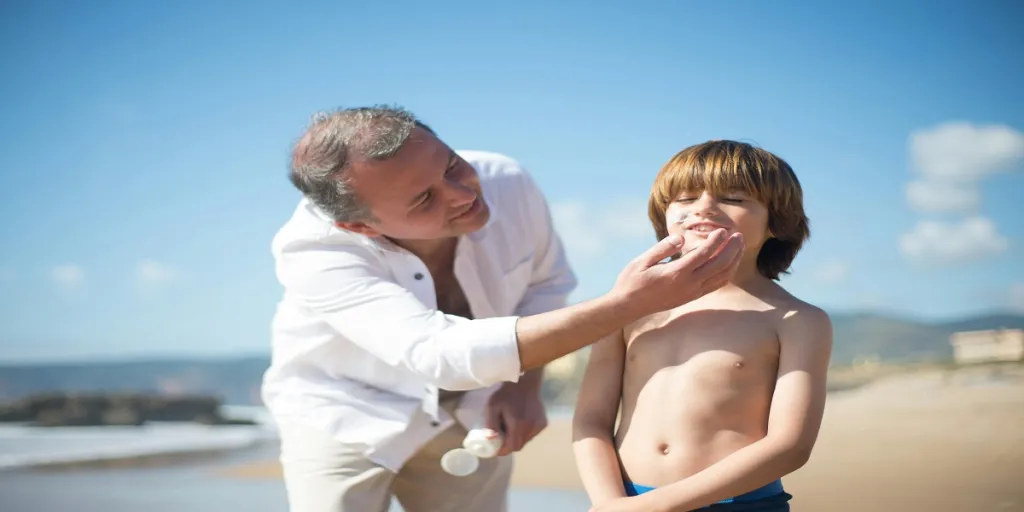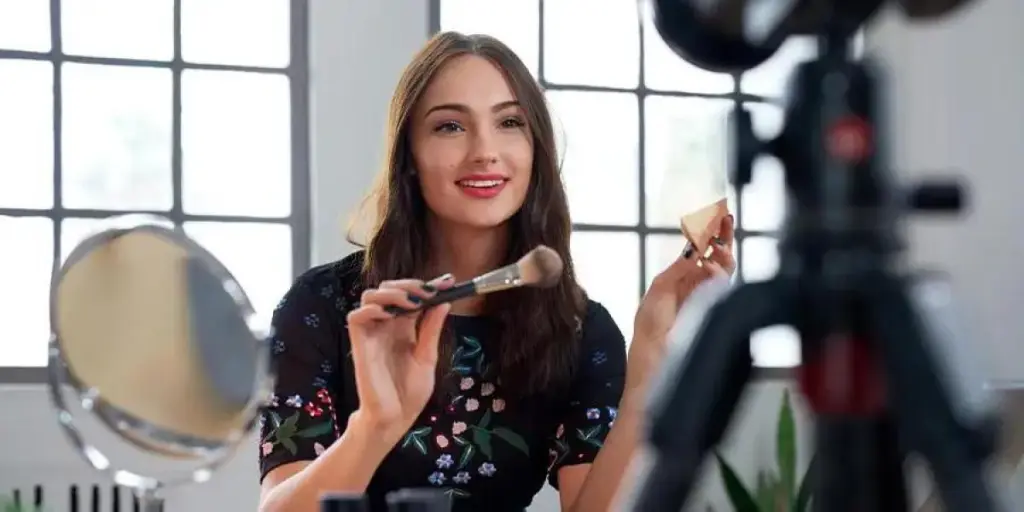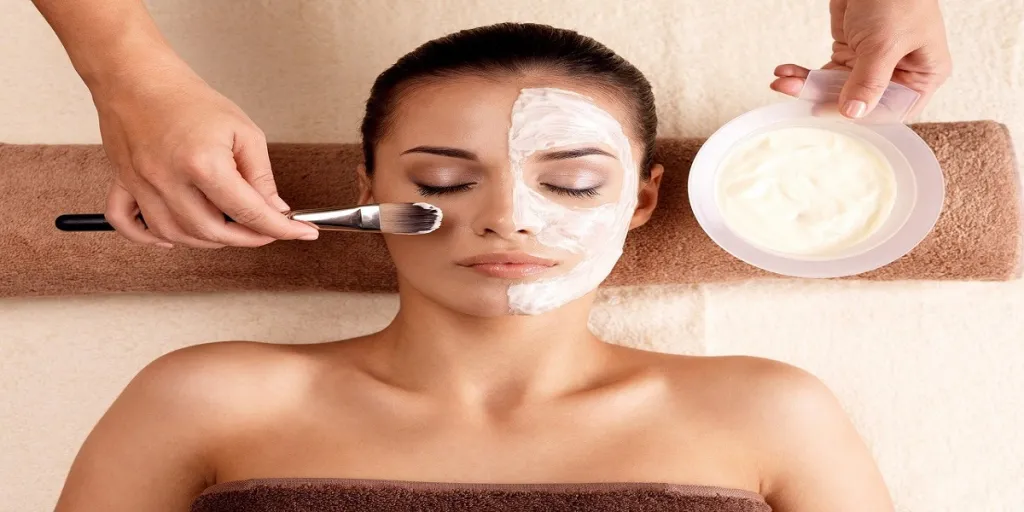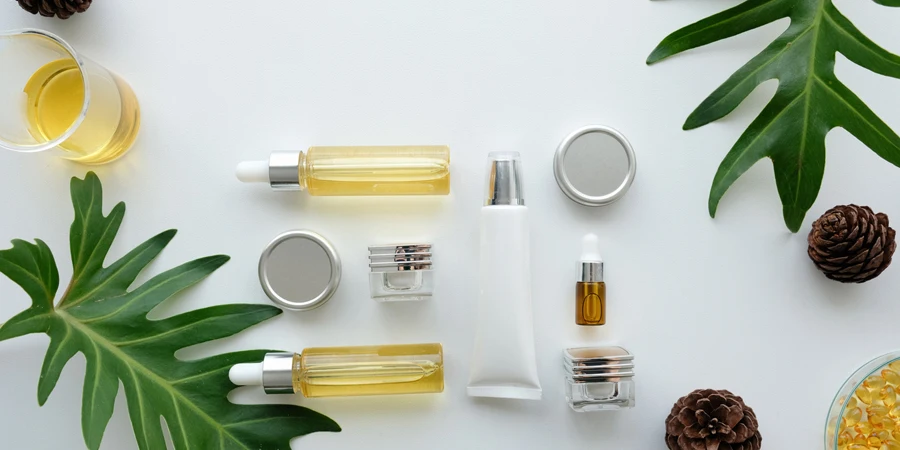The impact of beauty products on our oceans is coming to light. The beauty industry’s impact, alongside overfishing, plastic packaging pollution and chemical run-off, has led to an increasing concern for our oceans. More than 80% of ocean pollution arises from land-based sources. In 2015, an estimated 150 million tonnes of plastic accumulated in the seas. The amount of plastic trash flowing into the oceans is set to triple by 2040. While plastic packaging is a major focus for beauty brands, the impact of beauty formulas on the ocean is the next step beauty brands can take to make a difference in saving the ocean.
The health and biodiversity of our oceans is of major concern; the beauty industry is tackling its impact with a new focus on ocean-safe formulations. Discover how your beauty brand can redesign key formulas and become authentically ‘ocean-safe.’
Table of Contents
Sunscreens’ impact on the oceans
Which ingredients have the most negative impact
Microplastics and the ocean
Ocean-friendly sunscreen legislation
The consumer push toward change
Ocean-safe certifications
Alternative sunscreen ingredients
The next step in ocean-safe beauty
Sunscreens’ impact on the oceans
When it comes to the beauty industry’s impact on the oceans, there is a heavy focus on the sun-care industry. The global sunscreen market is forecast to reach a value of $10.7 billion by 2024, increasing from $8.5 billion in 2019. As much as 14,000 tonnes of sunscreen end up in the oceans yearly, and research highlights that key ingredients damage coral reefs and marine life.
An increase in coral reef bleaching was observed through the final two decades of the 20th century, with scientists discovering that “chemical compounds in sunscreen products can cause abrupt and complete bleaching of hard corals, even at extremely low concentrations.”
Corals have a symbiotic relationship with zooxanthellae, microscopic algae that are their primary food source. The algae also give coral its color. When synthetic UV filters in sunscreens enter the ocean, they can stimulate viral infections in the algae, leaving the coral’s tissue bleached and vulnerable.
While bleached coral is not dead, they are under stress and therefore more susceptible to starvation, disease and mortality.
Why coral reefs are important
Coral reefs are important for several reasons;
- Protection from coastal erosion
- Source of food and new medicines
- Host more than a quarter of all marine fish species even though they cover less than 0.1% of the ocean floor
Coral reefs have an estimated global value of as much as $36 billion annually due to tourism. Additionally, more than 500 million people worldwide depend on reefs for food, jobs and coastal defense, so their disappearance would have a significant global impact.

Which ingredients have the most negative impact
Several beauty ingredients have been found to harm marine life. While the research behind some claims is established, others remain a cause for debate and need further investigation.
The two ingredients widely accepted as not ocean-safe are oxybenzone and octinoxate.
Oxybenzone, also called benzophenone-3, has been found to bleach coral and inhibit the growth of young corals, damaging their DNA. Oxtinoxate, which filters UVB rays, also bleaches coral. Both have been found to “induce feminization in adult male fish and increase reproductive diseases in creatures from sea urchins to parrotfish.”
Octocrylene, also used in sunscreen, is toxic to coral at high concentrations. When tested at levels more likely to be encountered in the environment, it was found to accumulate as fatty acid esters, which could prove toxic.
Parabens are also in the spotlight. They have been found in rivers, wastewater, and tissue or marine animals. However, there is currently little research on whether their presence causes harm.
Other beauty ingredients to be aware of
Triclosan is common in antimicrobial products, such as soaps and body wash, and is often rinsed down the drain. Multiple studies have found it exhibits toxicity to “several aquatic organisms, plants, fish, algae, arthropods, molluscs, and nematodes, among others.” It has been found to cause irreversible damage to algae, affecting the structure of the food chain.

Microplastics and the ocean
Microplastics and nanoparticles are also major concerns regarding our oceans. The potential damage caused by microplastics depends on their size, shape and type, as well as the level of exposure.
A 2021 study found 24.4 trillion pieces of microplastic in the world’s oceans, and they’re associated with health problems such as inflammatory response in tissue, cancer and infertility.
Nanoparticles such as zinc and titanium oxide are also considered toxic, but further testing is needed.
Ocean-friendly sunscreen legislation
Environmentally focused scientific findings influence policies and legislation as governments seek to mitigate the effects of rising temperatures and a changing climate.
Current ocean-friendly legislation
Led by reports of coral bleaching, Hawaii introduced SB 2571, Act 104, in Sept 2019. The Act, which came into force in January 2021, “bans the sale, offer of sale or distribution of any sunscreen that contains oxybenzone or octinoxate, or both, without a prescription issued by a licensed healthcare provider to protect marine ecosystems.”
Following this bill, the Pacific Island of Palau followed suit but additionally banned octocrylene and certain parabens. Other countries that have banned some or all of these ingredients include Aruba, the Virgin Islands, and Bonaire. Mexican vacation parks like Cozumel have also enacted federal restrictions on these ingredients.
The UK banned the sale of rinse-off cosmetic and personal care products containing microbeads, considered a persistent pollutant, in 2018, joining Korea, Canada, and Sweden. Other nations to ban microbeads include Ireland, Thailand and Italy.
What’s next?
In 2021, PFAS, known as ‘forever chemicals,’ were found to travel thousands of kilometers via sea spray before returning to land. In July 2021, Maine enacted a law that bans the use of toxic PFAS compounds in all products by 2030, while the EU also proposed to address PFAS.
Brands must stay abreast of developments in this space and work to develop alternative ingredients before being forced to do so by law.

The consumer push
According to a global survey by The Economist Intelligence Unit and the World Ocean Initiative, 83% of the general public are concerned about ocean issues, and 26% are “very concerned.” Due to its tangible nature, plastic pollution is seen as the top priority for restoring ocean health. However, chemical pollution follows in second place.
In America, 65% of consumers are concerned or very concerned about plastics in the ocean. 72% of the general public feel citizens have a significant role in supporting ocean science; however, 54% say lack of knowledge prevents them from becoming involved.
Clear messaging about a product’s positive attributes will be necessary to engage consumers actively seeking ways to help. 74% of consumers are likely to shop sunscreens marketed with eco credentials, according to Cosmetics Business.
Currently, global consumer demand for ocean-safe products is a greater force than legislation. Brands must adapt to their demands now rather than waiting for legislation, as consumers will likely consider this too little too late.
Ocean-safe certifications
‘Ocean-safe’ and ‘reef-safe’ are burgeoning terms within the brand lexicon. Legislation is either recently implemented or, in many markets, still under discussion; therefore, corresponding certifications and standards are emerging and not as recognized as Organic of Fairtrade, for example.
Protect Land + Sea (PL+S)
Protect Land + Sea (PL+S) is a certification developed by Haereticus Environmental Laboratory, a nonprofit scientific organization whose research was instrumental in Hawaii Act 104 and subsequent sunscreen ingredient bans.
PL+S certified products are “laboratory tested using analytical forensic techniques to verify that the product is free of the chemicals on the ‘HEL List’.” This list highlights chemicals that are known pollutants, including microbeads, nanoparticles, oxybenzone, octinoxate and many parabens.
Reef Friendly
Biorius, which developed certifications including Vegan, Clean Beauty and GMO-free, has introduced a Reef Friendly certification.
To be certified, a cosmetic product must be free of several ingredients, including oxybenzone, octinoxate, parabens, triclosan and microplastics. Products must be formulated without nanomaterials, and sunscreens must be water-resistant.
Friend of the Sea
Friend of the Sea also has a standard for sustainable sunscreens. With this certification sunscreen should not be composed of ethylhexyl, methoxycinnamate, and oxybenzone. It recommends other ingredients, including octisalate, octocrylene and butylparaben, not be included in formulations.
As ocean-safe certifications are not yet seen as imperative to drive purchases, many brands use their own ocean-safe or reef-friendly icons to indicate products are free from certain chemicals. This is set to change as consumers become more educated, and certification will soon become an expectation.
While certifications aren’t an answer in themselves, formulating according to them shows commitment to transparency and conservation.
Beware of ‘bluewashing’
‘Bluewashing’ is the same principle as greenwashing but applies to ocean safety claims. Given the fact that terms such as ‘ocean-safe’ and ‘reef-friendly’ are vague and not officially defined, it could be easy to fall into the trap of bluewashing, which can have severe ramifications for a brand.
Brands that inflate sustainability claims or mislead consumers can face legal action. At the time, it impacts consumer purchasing decisions. 48% of UK consumers would buy a brand’s product or service as little as possible if they thought the company wasn’t living up to sustainability claims, while 70% of consumers globally say that being able to trust a brand is more important now than ever.
A brand accused of bluewashing may be overplaying the safety or sustainability of its product. For example, a sunscreen may carry an ocean-safe label but still include nanoparticles in its formulation. To avoid bluewashing, being specific and taking a holistic view of products are needed. Ocean-safe claims should be backed either by a certification or an explanation of what exactly makes a product ocean-safe.
‘Ocean-safe’ may even be too broad of a term, so be specific.

Alternative sunscreen ingredients
Unlike other problematic ingredients such as mica or sandalwood, which are desirable but not imperative, you cannot simply remove sunscreens from routines. Skin cancer is the 19th most common cancer worldwide, and non-melanoma skin cancer is the fifth most commonly occurring cancer. It’s vital that environmentally safe alternatives are provided so consumers can protect themselves and the environment.
For those looking to avoid the expanded list of chemicals that have the potential to harm the environment, a mineral sunscreen formulation containing zinc oxide, titanium dioxide, or both is an option. Unlike chemical sunscreens, mineral sunscreens provide a physical barrier; as such, they’ve been known to leave a white cast which can be undesirable for consumers.
Zinc oxide and titanium oxide nanoparticles are best for avoiding this white cast; however, as we’ve already discussed, these are not considered ocean-safe under some certifications since they can accumulate in coral reef ecosystems. So, the most ocean-safe formulations include ‘non-nano’ zinc oxide and titanium oxide.
Brands are working on ways to formulate more desirable mineral sunscreens that avoid the white cast. For example, Australian Gold adds a tint to help with blending.
Are there other options?
A paper published in Nature Scientific Reports in May 2021 revealed methylene blue, a “century-old medicine and laboratory dye,” has the potential to be considered as a sunscreen active. Their work suggests that it has several desirable qualities that make it a promising ingredient for sunscreens that appears to pose no harm to coral reefs.
Brands should stay up-to-date with new research on more ocean-safe ingredients to use in sunscreens.
What else can beauty brands do to help save the oceans?
Ocean-safe formulations can help prevent further damage to the oceans and should be a priority for all beauty brands; however, they cannot undo existing damage. By giving to or partnering with a charity or nonprofit, brands can help restore marine ecosystems while building brand loyalty and boosting sales.
Research by Mintel found that a company’s charitable giving affects 73% of Americans’ purchasing decisions, while half would switch to a brand that supports a cause they believe in (rising to 61% in younger generations). 65% of people believe it is a company’s responsibility to give back.
The next step in ocean-safe beauty
Legislation is still emerging and limited to only markets when it comes to ocean-safe beauty, but consumer demand is high globally. It’s essential to being on the forefront of the ocean-safe issue when it comes to beauty products. If you take initiative and put the environment first you will build trust in your brand.
Show leadership by prioritizing ocean health before the law dictates it. Think beyond the few ingredients that currently dominate the conversation and work toward products that protect the environment on all fronts – consider all ingredients within your formulations and be mindful of other aspects such as packing. Certify your products to define exactly what ocean-safe means for your brand while keeping bluewashing in mind. It’s essential to be clear and transparent about your environmental goals and the ingredients used in your products. Finally, go above and beyond to make a difference by partnering with a marine charity or nonprofit that is dedicated to actively improving marine health.








